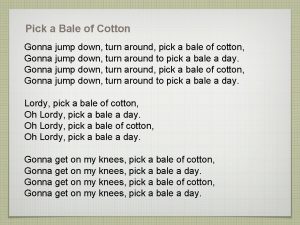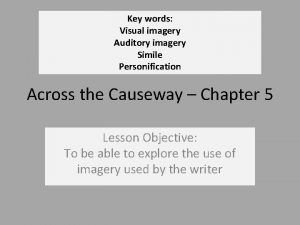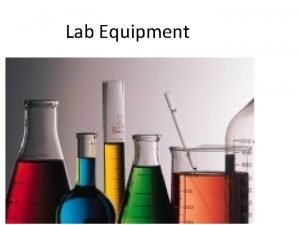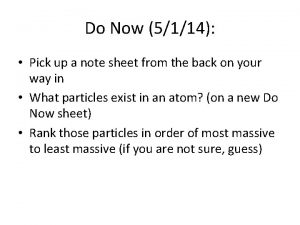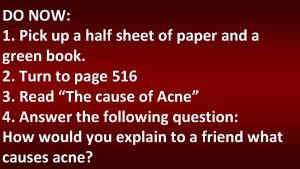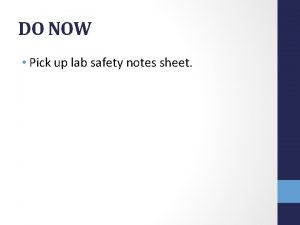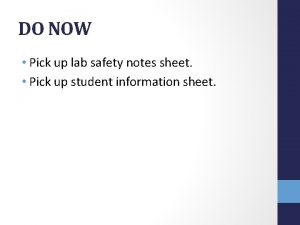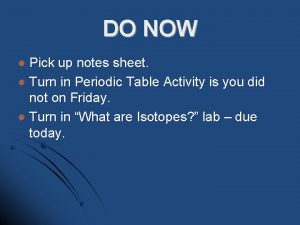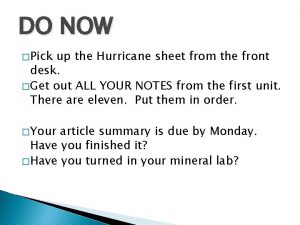Do Now no sheet today Pick up a




















- Slides: 20

Do Now (no sheet today) • Pick up a laptop for yourself • Open school website

Assignment • Complete Diabetes intro Assignment QUIETLY • 40 minute classes, work quickly • First, take notes on powerpoint and answer questions, then complete Venn Diagram: DUE TODAY

Diabetes – What is it? • Body is not producing or has lost sensitivity to insulin • Insulin is a hormone that allows sugars (glucose) to enter into each cell of your body • Insulin is produced in the body by the pancreas

Anatomy of the Pancreas • A gland/organ that lies behind the stomach • Secretes insulin from beta cells • Secretes glucagon from alpha cells

Insulin & other hormones • Insulin – hormone that lowers blood glucose • Glucagon – hormone that increases blood glucose when needed • Somatostatin – hormone that can suppress both insulin and glucagon when needed

How does Insulin work? • A person normally secretes insulin in response to an elevated blood sugar level • Insulin helps sugar move out of the blood and into cells • Cells will not allow blood sugar in without insulin – this can cause a problem

Types of Diabetes • Type I – body does not produce any insulin • Type II – body has lost sensitivity to insulin • Secondary – a consequence from another disease (Ex: pancreatitis, Cystic Fibrosis) • Gestational Diabetes – Diabetes during pregnancy • Pre-diabetes – an intermediate between normal and diabetes

Why isn’t the body making insulin? • In type I, the body has made a big mistake – It attacks the beta cells and kills them. Beta cells are the cells of the pancreas which produce insulin • In type II, the pancreas is still making insulin, their bodies have become insulin resistant

Type I • Usually diagnosed in children and young adults • Must take daily insulin shots • Accounts for 5 -10% of the diabetic population

Type II • The more common form of the disease • Approximately 50% of men and 70% of women are obese when diagnosed • Nearing epidemic proportions – Increased # of older Americans – Greater occurrence of obesity – Sedentary lifestyles

Symptoms • • • Polyphasia – Excessive eating Polyurea – Excessive urination Polydypsia – excessive fluid intake Blurred vision Poor wound healing

Diagnosis • <110 mg/dl is normal fasting blood glucose • 110 -126 mg/dl is impaired fasting glucose • >126 mg/dl is diagnosed as diabetes (fasting blood glucose) • Glucose tolerance testing: 200+ mg/dl at 2 hour mark

Complications • Excess sugar in blood damages blood vessels and filtering systems (leading to nerve damage) • Causes issues with: – Kidney – Heart – Nerve Damage – Feet – Eyes

Blood glucose monitoring • Diabetics must keep track of blood glucose levels • Check several times a day • Gives diabetic good indication of what affects their blood sugar and how

Oral Medications • Sulfonylurea- stimulates body to make more insulin • Metformin – lowers blood sugar by helping insulin work better

Hypoglycemia • Low Blood Sugar • Happens to everyone with diabetes • Symptoms: Shakiness, dizziness, sweating, hunger, headache, tingling sensations

Treatment - hypoglycemia • Sugar! • Fruit juice, candy, glucose tablets • If untreated, patient could pass out

Hyperglycemia • • High blood sugar Not enough insulin Too much food Too little exercise

Testing • Glucose Tolerance Test – Glucose Tolerance Testing (Gateway) monitors the amount of sugar in the liquid portion of blood called plasma, over a set time period and gives doctors information as to how the body utilizes sugar • Insulin Level Testing – The level of insulin in the blood helps doctors further define a diagnosis of diabetes. Type 1 diabetics do not produce insulin. Type 2 diabetics produce insulin, but the body does not permit this hormone to effectively do its job.

In-class Assignment • Answer the following conclusion questions based on your notes and the link posted to the school website: 1. 2. 3. 4. 5. 6. Describe how Glucose Tolerance Testing can be used to diagnose diabetes. Explain why insulin injections are not the course of treatment for all diabetics. Explain how lifestyle choices can impact a person’s risk for developing diabetes. What do you think it means if doctors say that a person is “pre -diabetic”? Using information from this activity, explain the basic relationship between insulin and glucose. Go back to the school website, complete the Venn diagram Assignment
 Example of repitition
Example of repitition Today meeting or today's meeting
Today meeting or today's meeting Characteristic of fingerprint
Characteristic of fingerprint For todays meeting
For todays meeting Today's lesson or today lesson
Today's lesson or today lesson In todays class
In todays class Nursing now today's issues tomorrow's trends
Nursing now today's issues tomorrow's trends Nursing now today's issues tomorrow's trends
Nursing now today's issues tomorrow's trends Now i see it now you don't
Now i see it now you don't Stock verification surplus
Stock verification surplus Jump down pick a bale of cotton
Jump down pick a bale of cotton Perhaps my father will pick you up
Perhaps my father will pick you up Example of modal verbs
Example of modal verbs Imagery simile
Imagery simile Pick a route
Pick a route Find odd one out
Find odd one out Pick it up rhetoric
Pick it up rhetoric Pick the answer
Pick the answer Used to pick up or hold hot objects
Used to pick up or hold hot objects Pick's theorem
Pick's theorem Romeo and juliet gossip column
Romeo and juliet gossip column










